Articles
- Page Path
- HOME > Korean J Community Nutr > Volume 16(1); 2011 > Article
-
Original Article
- Effects of a Health Education Program for Elementary School Children in Gyeonggi-do Rural Area
- Jae Yeon Lim, Hye Bock Na
-
Korean Journal of Community Nutrition 2011;16(1):1-13.
DOI: https://doi.org/10.5720/kjcn.2011.16.1.1
Published online: February 28, 2011
Department of Food and Nutrition, College of Natural Sciences, Seoul Women's University, Seoul, Korea.
- Corresponding author: Hye Bock Na, Department of Nutrition, Seoul Women's University, 126 Kongneung 2-dong, Nowon-gu, Seoul 139-144, Korea. Tel: (02) 970-5645, Fax: (02) 976-4049, hbna@swu.ac.kr
Copyright © 2011 The Korean Society of Community Nutrition
- 795 Views
- 0 Download
- 5 Crossref
Figure & Data
REFERENCES
Citations

- Effects of Nutrition Education Using Dietary Guidebook in Higher Grade Elementary Students of Jeonbuk Area
Mi-Ran Park, Sook-Bae Kim
Korean Journal of Community Nutrition.2018; 23(1): 13. CrossRef - Effectiveness Evaluation of Food Allergy Education Program for Elementary School Children
Harim Kim, Kyunghee Song, Youngmi Lee, Youngshin Han, Bomi Kang, Soun Ju Kweoun
Journal of the East Asian Society of Dietary Life.2015; 25(6): 1058. CrossRef - Effects of Dietary Education on Elementary Children in After-school Program in Seoul
Kyung-Hee Kim
Journal of the Korean Society of Food Culture.2014; 29(2): 222. CrossRef - Perception on Nutrition Labeling of the Processed Food among Elementary School Students and Parents in Daegu Area
Jung Mi Kim, Mi Hee Lee, Nan Hee Lee
The Korean Journal of Food And Nutrition.2014; 27(6): 1107. CrossRef - Relationships between Eating Behavior, Dietary Self-Efficacy, and Nutrition Knowledge of Elementary School Students by Food Service Type in Gangwon Province
Hyang-Rye Won, Gi-Beum Shin
Journal of the Korean Society of Food Science and Nutrition.2012; 41(5): 638. CrossRef
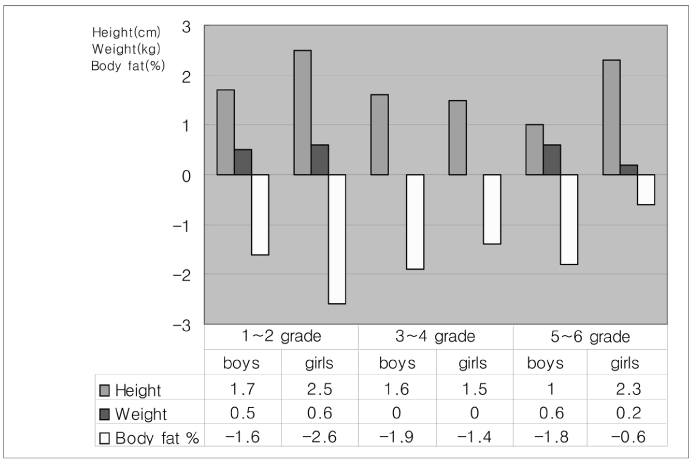
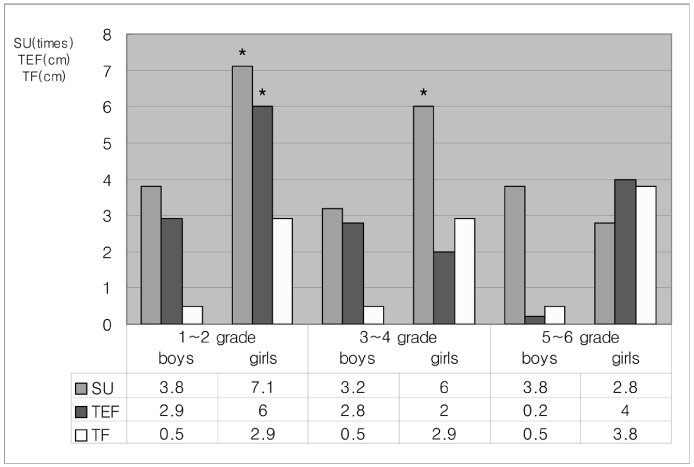
Fig. 1
Fig. 2
Contents of health education program
Distribution of subjects
1) N (%)
Anthropometric characteristics of subjects before health education
1) BMI(Body Mass Index) : weight(kg)/height (m)2
2) Mean ± SD
*: p < 0.05, **: p < 0.01, ***: p < 0.001 by t-test between boys and girls
Physical fitness of subjects before health education
1) Mean ± SD
*: p < 0.05 by t-test between boys and girls
Changes of obesity after health education program
1) N (%)
Changes of serum biochemical levels after health education program
1) Mean ± SD
***: p < 0.001 by t-test
Changes of abnormal serum biochemical levels after health education program
1) N
Changes of nutrition knowledge of subjects after health education program
Knowledge (0 - 1): correct answer 1, don't know and wrong answer 0
1) %
2) *: p < 0.05, **: p < 0.01 by Chi-square test
3) Mean ± SD
4) *: p < 0.05 by t-test
Changes of food habits of subjects after health education program
Score (1 - 4) : 6 - 7days per week 4, 3 - 5days per week 3, 1 - 2days per week, 0 day per week 0
1) Mean ± SD
*: p < 0.05 by t-test
Changes of self-efficacy of subjects after health education program
Score (1 - 4) : strong disagree 1, disagree 2, agree 3, strong agree 4
1) Mean ± SD
*: p < 0.05 by t-test
1) N (%)
1) BMI(Body Mass Index) : weight(kg)/height (m)2 2) Mean ± SD *: p < 0.05, **: p < 0.01, ***: p < 0.001 by t-test between boys and girls
1) Mean ± SD *: p < 0.05 by t-test between boys and girls
1) N (%)
1) Mean ± SD ***: p < 0.001 by t-test
1) N
Knowledge (0 - 1): correct answer 1, don't know and wrong answer 0 1) % 2) *: p < 0.05, **: p < 0.01 by Chi-square test 3) Mean ± SD 4) *: p < 0.05 by t-test
Score (1 - 4) : 6 - 7days per week 4, 3 - 5days per week 3, 1 - 2days per week, 0 day per week 0 1) Mean ± SD *: p < 0.05 by t-test
Score (1 - 4) : strong disagree 1, disagree 2, agree 3, strong agree 4 1) Mean ± SD *: p < 0.05 by t-test

 KSCN
KSCN


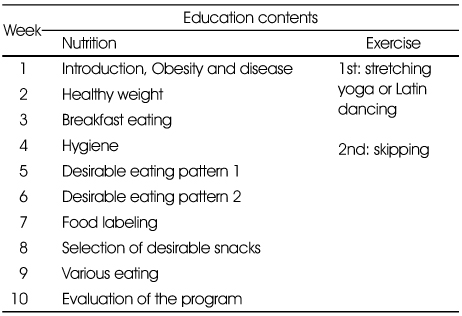




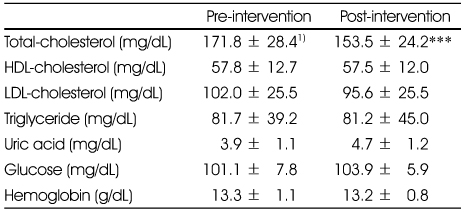
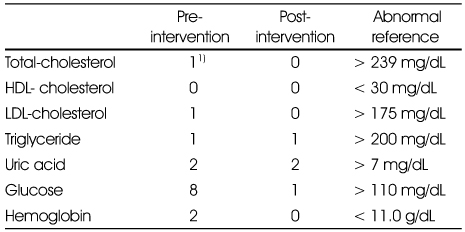


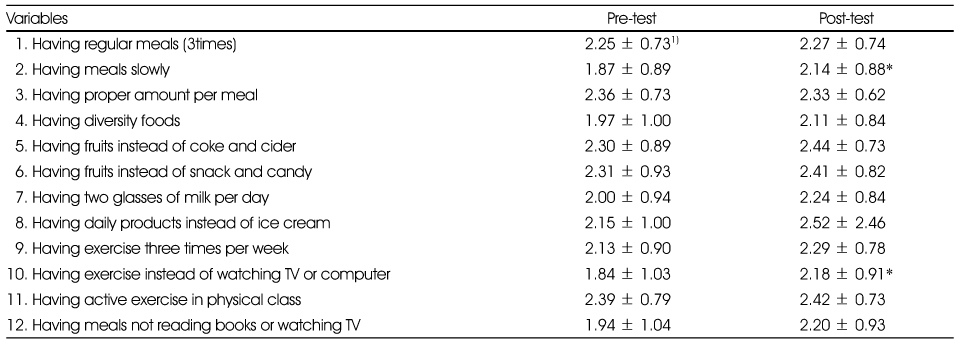
 PubReader
PubReader Cite
Cite


